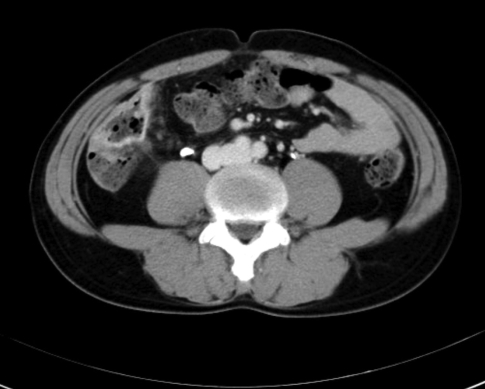1. Behet H. Ueber rezidivierende aphtese durch ein virus verusachte Geswuere am Mund, am Auge und an den Genitalien. Dermatol Wochenschr 1937. 105:1152–1157.
2. Sakane T, Takeno M, Suzuki N, Inaba G. Behet's disease. N Engl J Med 1999. 341:1284–1291PMID : 10528040.


3. Bayraktar Y, Ozaslan E, van Thiel DH. Gastrointestinal manifestations of Behcet's disease. J Clin Gastroenterol 2000. 30:144–154PMID : 10730919.


5. Kram MT, May LD, Goodman S, Molinas S. Behcet's ileocolitis: successful treatment with tumor necrosis factor-alpha antibody (infliximab) therapy: report of a case. Dis Colon Rectum 2003. 46:118–121PMID : 12544532.


6. Best WR, Becktel JM, Singleton JW. Rederived values of the eight coefficients of the Crohn's Disease Activity Index (CDAI). Gastroenterology 1979. 77:843–846PMID : 467941.


7. Harvey RF, Bradshaw JM. A simple index of Crohn's disease activity. Lancet 1980. 1:514. PMID : 6102236.


8. Masugi J, Matsui T, Fujimori T, Maeda S. A case of Behcet's disease with multiple longitudinal ulcers all over the colon. Am J Gastroenterol 1994. 89:778–780PMID : 8172155.

9. Choi IJ, Kim JS, Cha SD, Jung HC, Park JG, Song IS, Kim CY. Long-term clinical course and prognostic factors in intestinal Behcet's disease. Dis Colon Rectum 2000. 43:692–700PMID : 10826433.


10. Gul A. Behet's disease: an update on the pathogenesis. Clin Exp Rheumatol 2001. 19:S6–S12PMID : 11760403.

11. Suzuki Y, Hoshi K, Matsuda T, Mizushima Y. Increased peripheral blood gamma delta
+ T cells and natural killer cells in Behcet's disease. J Rheumatol 1992. 19:588–592PMID : 1534375.

14. Cha SD, Lim YS, Kim JW, Kim CG, Kim JS, Chang DK, Jung HC, Song IS, Choi KW, Kim CY. Response to medical therapy, course and recurrence of colonic lesions in Behcet's colitis. Korean J Gastroenterol 1997. 30:472–480.
15. Kasahara Y, Tanaka S, Nishino M, Umemura H, Shiraha S, Kuyama T. Intestinal involvement in Behcet's disease: review of 136 surgical cases in the Japanease literature. Dis Colon Rectum 1981. 24:103–106PMID : 7215071.


16. International Study Group for Behcet's Disease. Criteria for diagnosis of Behcet's disease. Lancet 1990. 335:1078–1080PMID : 1970380.

17. Robertson LP, Hickling P. Treatment of recalcitrant orogenital ulceration of Behcet's syndrome with Infliximab. Rheumatology 2001. 40:473–474PMID : 11312390.


18. Munoz-Fernandez S, Hidalgo V, Fernandez-Melon J, Schlincker A, Martin-Mola E. Effect of infliximab on threatening panuveitis in Behcet's disease. Lancet 2001. 358:1644. PMID : 11716917.

19. Hassard PV, Binder SW, Nelson V, Vasiliauskas EA. Anti-tumor necrosis factor monoclonal antibody therapy for gastrointestinal Behcet's disease: a case report. Gastroenterology 2001. 120:995–999PMID : 11231954.












 PDF Links
PDF Links PubReader
PubReader ePub Link
ePub Link Full text via DOI
Full text via DOI Download Citation
Download Citation Print
Print





